Tree Nuts: How to Introduce Your Baby to this Potentially Allergenic Food
- How to safely modify common tree nut foods so they’re ideal for even early eaters to try
- Why almond milk is not an appropriate option for introducing tree nut protein to babies
- Which tree nuts to try out for your baby (...and why coconut isn’t one of them :)
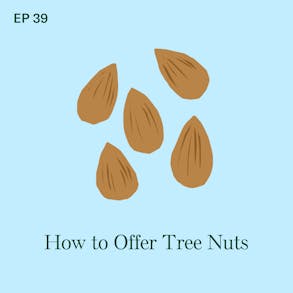
LISTEN TO THIS EPISODE
Episode Description
Can you safely offer tree nuts to your baby if whole nuts and thick nut butter are choking hazards? Yes…and it’s a good idea to do tree nuts early and often! Tree nuts are one of the Top 9 allergenic foods, and early introduction may help reduce the risk of developing a tree nut allergy. In this episode, you’ll learn how to safely serve tree nuts to your baby using almond flour and thinned out nut butter. We’ll also cover why almond milk doesn’t count and how to watch for signs of an allergic reaction.

Links from this Episode
- Puffworks Baby Almond Puffs are a no-stress, low-mess way to safely introduce your baby to tree nut (do this after you introduce peanut as these puffs do contain peanut too); use the code BLWPOD to save 15% here (this is an affiliate link).
- Baby-Led Weaning with Katie Ferraro program with the 100 First Foods™ Daily Meal Plan, join here: https://babyledweaning.co/program
- Baby-Led Weaning for Beginners free online workshop with 100 First Foods™ list to all attendees, register here: https://babyledweaning.co/baby-led-weaning-for-beginners
Other Episodes Related to this Topic
- Episode 14 - Peanut: How to Introduce Your Baby to This Potentially Allergenic Food
- Episode 58 - What do I do if My Baby Has an Allergic Reaction? with Ron Sunog, MD
- Episode 380 - Why Doctors STILL Aren't Talking About Introducing Allergenic Foods with Ruchi Gupta, MD, MPH
Resources and Research
- American Academy of Pediatrics. “Addendum Guidelines for the Prevention of Peanut Allergy in the United States.” Pediatrics, vol. 139, no. 1, 2017, doi:10.1542/peds.2016-4005.
- Gupta, Ruchi S., et al. “Prevalence and Severity of Food Allergies among US Adults.” JAMA Network Open, vol. 2, no. 1, 2019, e185630, doi:10.1001/jamanetworkopen.2018.5630.
- Food Allergy Research & Education (FARE). “Tree Nut Allergy.” FARE, www.foodallergy.org/living-food-allergies/food-allergy-essentials/common-allergens/tree-nut. Accessed April 2025.
- Sicherer, Scott H., and Hugh A. Sampson. “Food Allergy: A Review and Update on Epidemiology, Pathogenesis, Diagnosis, Prevention, and Management.” Journal of Allergy and Clinical Immunology, vol. 141, no. 1, 2018, pp. 41–58.e5, doi:10.1016/j.jaci.2017.11.003.
- National Institute of Allergy and Infectious Diseases. “Guidelines for the Diagnosis and Management of Food Allergy in the United States.” NIH Publication, 2010, www.niaid.nih.gov/sites/default/files/faguidelinespatient.pdf.

Latest Episodes

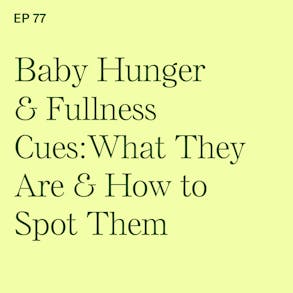
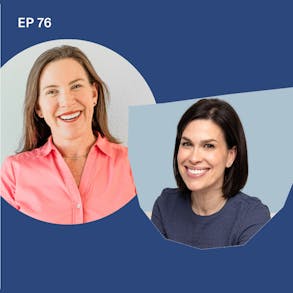
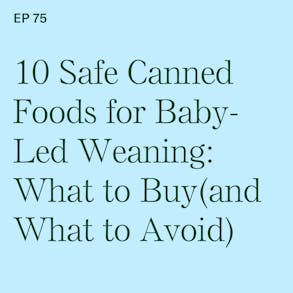
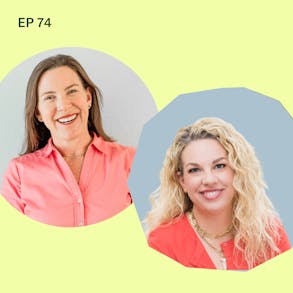
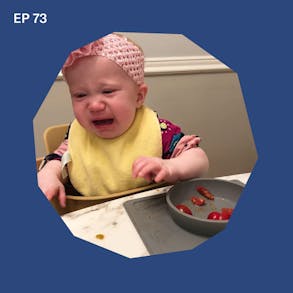
Katie Ferraro (2s):
So if you think about like almond for example, which is a tree nut, what are the common ways that you know, you and I are gonna eat almond, right? It's probably gonna be almond butter, but thick globs of nut butter like almond butter. Especially for your early eater that's gonna get lodged on the roof of the side of their mouth. Your baby does not yet have the mouth structure the muscles to safely dislodge that so you can safely thin out the almond butter and then offer it off of a preloaded spoon as a safe and effective way to have your baby try this potentially allergenic food call Tree nuts. Hey there. I'm Katie Ferraro, registered dietitian, college nutrition professor and mom of seven specializing in baby-led weaning here on the Baby-Led Weaning with Katie Ferraro podcast.
Katie Ferraro (43s):
I help you strip out all of the noise and nonsense about feeding, giving you the confidence and knowledge You need to give your baby a safe start to solid foods using baby-led weaning. Hello and welcome back. Today we're talking about Tree Nuts and How to Introduce Your Baby to This Potentially Allergenic Food Tree Nuts are one of the top nine allergenic foods. So those are the nine foods that account for about 90% of food allergy and research shows that we wanna introduce these top nine allergenic foods to our babies early and often in order to help prevent food allergy down the road. Now we certainly don't know as much about tree nut prevention as we know about peanut prevention, but all data is pointing towards that introduction early and often.
Katie Ferraro (1m 30s):
So today I wanna teach about some easy ways for you to offer your baby tree nut. Again, this is a separate allergenic food from peanut and technically it does not matter what order you go in for the introduction of the allergenic foods. My suggestion to you is that you just don't introduce two new potentially allergenic foods at the same time for the first time, right? If you did peanut and tree nut together for your baby at six months on the same day for the first time and your baby had an allergic reaction, how would you know if that allergic reaction was to the protein from the peanuts or from the Tree nuts again. So peanuts are a legume Tree. Nuts are nuts. We're gonna talk a little bit about the technicalities of tree nut allergy. In today's episode, I'm gonna walk you through how you can safely make Tree Nuts safe, even for the earliest of eaters.
Katie Ferraro (2m 14s):
We'll talk about why almond will definitely does not work for allergy prevention when you're looking at Tree Nuts. And I'll show you how to avoid a very common mistake that a lot of parents make when they're introducing tree nut, especially if they're trying to do it with almond butter. If you have a second, if hit subscribe wherever you are listening to this podcast because I put out two new episodes every week on Monday, I do a short solo mini baby-led weaning training episode like this one, and then every Thursday I do a longer interview style episode with another feeding expert. If you hit subscribe, you will get notified when both of those episodes are live so that you never miss any of this baby-led weaning info. And I like to start out these mini solo trainings with the baby-led weaning tip of the day.
Katie Ferraro (2m 56s):
And today's tip with regards to Tree Nuts is that intact nuts or thick globs of nut butter can be a choking hazard and they should not be offered to babies, especially early on in baby-led weaning. But hang tight because in this episode I'm gonna go through ways to make those foods actually safe so that your baby can try this as early as six months of age provided that your baby is showing the other reliable signs of readiness to eat. So let's get started learning about Tree Nuts. As I mentioned in the intro, Tree Nuts are one of the top nine allergenic foods. Again, those are the foods that account for about 90% of food allergy as far as estimations of tree nut allergy in the US go, it's somewhere around 0.5 to 1% of the US population is thought to have a tree nut allergy.
Katie Ferraro (3m 42s):
About 9% of kids who have a tree nut allergy will eventually outgrow it. So this is one of those ones that tends to be lifelong. Okay, we were talking about soy allergy two episodes ago, and in soy allergy, it's something like 70% of kids will outgrow their soy allergy by the time they're 10. That's not the case with Tree Nuts. Now, sometimes parents say, oh, my kid has a nut allergy. Oh, what are they allergic to? Peanuts and Tree Nuts? Well, it certainly is possible that a person could be allergic to both of those. Okay? Remember, peanuts are in a different allergenic food category with a totally different type of protein in them than are Tree Nuts, okay? But remember that there's high risk of cross contamination. So that even though those two proteins in those two foods, tree nut and peanut, they're not botanically related, having a tree nut allergy, it does put you at higher risk for peanut allergy and vice versa.
Katie Ferraro (4m 29s):
So about 30% of those who have a peanut allergy will also be allergic to Tree Nuts, okay? But just because you have one or the other doesn't necessarily mean that you're gonna be allergic to the other. And having another sibling in the family who who maybe does have a tree nut allergy, it doesn't put that baby in the quote unquote high risk category, but there is a slightly higher risk if you do have first degree relatives with these different food allergies. Now, when it comes to Tree Nuts in the United States, there are eight Tree Nuts that are commonly recognized by the Food and Drug administration as being major allergens. So when we're talking about Tree Nuts, this is encompassing these eight almonds, Brazil nuts, cashews, hazelnut, macadamia nuts, pecans, pistachios, and walnuts.
Katie Ferraro (5m 12s):
Now those are considered the tree nut allergen category. That's for like labeling and safety purposes. But there are other Tree Nuts like chest nuts and pine nuts, and those are sometimes included in broader discussions. They're botanically considered to be seeds and they're certainly less common, but it is possible that someone could be allergic to them. Now, seeds generally are not considered to be a problem. People with tree nut allergy can most often usually eat sesame and sunflower and pumpkin seeds, macadamia nuts, I mentioned pine nuts. Those are also both considered to be seeds. The FDA list them as Tree Nuts, okay? People with tree nut allergy tend to be able to tolerate those. Sometimes we have questions about coconut. In 2006, the FDA did list coconut as a tree nut, but there are actually a very minimal number of people who are actually allergic to coconut.
Katie Ferraro (5m 56s):
And traditionally coconut is not restricted in the diet of people who have a tree nut allergy. Other things that are sometimes falsely listed under the tree nut category, nutmeg water, chest nuts, butternut squash, shea nuts, none of those are problematic for people with tree nut allergy. Now, when should we be introducing Tree Nuts? Okay, the American Academy of Pediatrics no longer recommends delaying the introduction of allergenic foods. Occasionally I talk to parents who are like, oh, my doctor's saying, you know, don't do egg until one and peanut till two and fist still three. Those are very, very outdated guidelines. Okay? More than 20 years old at this point, when I know when I was learning to be a dietitian and going through, you know, medical nutrition therapy courses, we learned, oh, well the standard practice at the time was delay the introduction of those allergenic foods and that was thought to reduce food allergy risk.
Katie Ferraro (6m 42s):
Now, things have totally changed since then. The opposite is what we now know to be true because of advances in science and research showing us that early introduction of these potentially allergenic foods is what has the ability to reduce your baby's risk of food allergy. If a tree nut allergy is going to be present, it generally thought that it will be present by the time the baby is two. And I also like to remind parents that we don't wait until two to introduce those allergenic foods, right? The earlier you can offer these allergenic foods, the less severe allergic reactions tend to be. But we also need to keep in mind that we're kind of limited with regards to how early we can introduce them because your baby is not safe to swallow anything except infant milk. So breast milk or formula up until the time they're six months of age or six months adjusted age if they were born prematurely.
Katie Ferraro (7m 26s):
And if they're showing you the other reliable signs of readiness to eat. So somewhere around the six month mark is when you want to start introducing your baby to these allergenic foods. You do not need to wait three to five days between new foods. Okay? That is an old wives tale. It's perfectly safe to offer your baby one new food or even more than one new food a day. We just don't do two new potentially allergenic foods on the same day. So in my program, we introduce five new foods a week. We do a new fruit on Monday, a new vegetable on Tuesday, a new starchy food on Wednesday, a protein food on Thursday, and then a potentially allergenic food every Friday. So that's my five step feeding framework. You do five new foods a week, that's 20 foods a month. In five short months, your baby is knocked off all the foods on my original 100 First Foods list.
Katie Ferraro (8m 9s):
And in the first nine weeks of this program, you're able to get your baby through all of those potentially allergenic foods. And I can't tell you what a sense of relief parents feel when they move on to week 10. By that point, their baby's eaten 50 foods, so they're like halfway to the 100 First Foods mark, and they've knocked out all of the allergenic foods. And of course the vast majority of babies are not going to be allergic to foods. And so parents like to know that, okay, we did all the not top nine allergenic foods, we did 'em early, we did 'em often, no reactions, and they have so much more confidence in their baby's ability to eat. If you wanna check out the program, it's called Baby-Led Weaning with Katie Ferraro. I've got my full 100 First Foods daily meal plan in there. I have 100 First Foods content library with videos and recipes and instructions on how to make all the foods on the 100 First Foods list safe for your baby's age and stage.
Katie Ferraro (8m 57s):
You can check out that program online at babyledweaning.co/program. Hey, we're gonna take a quick break, but I'll be right back. Now, how much of the potentially allergenic food, the tree nut protein should we be introducing? It's not known exactly how much, but what And when it comes to, you know, the dose makes the poison. The reality is your baby really does need to be ingesting some of that protein. And if you started any solid foods, you know your baby's not actually eating that much early on. So you can't just do it once. Okay? We've got to be introducing those allergenic foods early and often.
Katie Ferraro (9m 37s):
And so what we do in our program is we'll do the allergenic food twice on Friday, twice on Saturday and twice on Sunday with no other new foods across the weekend. So we're continuing to just redo that same allergenic foods six different times. Of course, you can incorporate other familiar foods that are non-allergenic foods from previous days. The baby doesn't just eat the tree nut, you know, six straight times. You can put the other familiar foods in the mix if you want to, but by the end of that weekend, you know your baby's tried that food six times. You know, they've actually ingested some of it and you've seen, wow, no reaction. Now what if my baby does have a reaction? If your baby's going to have an allergic reaction to a food, that reaction, the vast majority of them that's gonna occur within minutes and up to no more than two hours following ingestion.
Katie Ferraro (10m 18s):
So you really wanna observe your baby for up to two hours following the introduction of the allergenic food like train nut. Now, how do you thin out sticky nut butters like peanut butter or almond butter so that they can be safe for your baby to self feed? Well, you can do that by any number of means. You can mix breast milk or formula. And also I wanna point out that we're using the smooth nut butters with no added sugar and no added salt. So you're using a natural just a hundred percent almond butter, but it's too sticky, right? It can get lodged on the roof or the side of your baby's mouth and they don't have the tongues strength yet to dislodge that. And so it could potentially become a choking hazard. But if you thin it out when it slides off your stainless steel spoon by mixing it with breast milk or formula, you can also do yogurt, okay? Full fat, whole milk yogurt.
Katie Ferraro (10m 58s):
If your baby's already done the potentially allergenic food cow's milk and you know they're not allergic, okay? You can do it with unsweetened apple sauce. You can do it with anything you can get your hands on that you know your baby can tolerate as long as it gets it nice and smooth. And again, slides off that adult stainless steel spoon, you put it on a preloaded baby-led weaning spoon, put it in your baby's hand, let your baby bring the spoon to their mouth. So in that way, you know you can continue to honor those self-feeding principles of baby-led weaning, but offer a naturally, you know, period food like this thinned out almond butter.
Ezpz (11m 25s):
The spoons that I like to use for baby-led weaning are from the feeding gear company called EZPZ. So all the products that EZPZ were designed by their pediatric feeding specialist. If you wanna check out their feeding gear, the website is ezpzfun.com/babyled, and if you use that code, BABYLED, you get 15% off all of the feeding gear. Check out the tiny spoons from EZPZ. I love them for doing this. Thinned out almond butter.
Katie Ferraro (11m 52s):
Another option is almond flour. Okay? Two tablespoons of almond flour has about four grams of protein. That's pretty impressive. You can make a very simple baby-led weaning pancake. We've got a couple of different almond flour recipes for both phase one and phase two of baby-led weaning inside of our program. That's at babyledweaning.co/program. When it comes to making products like with almond flour that are baked goods, pancakes, or breakfast breads, we wanna avoid added sugar and no salt. So all of the recipes in my program, there's over 300 recipes in the baby-led weaning program. They have no added sugar or salt. Now what about almond milk? An eight ounce cup of almond milk is only going to have one gram of protein, okay? Because of the processing, the vast majority of protein is removed from almond milk.
Katie Ferraro (12m 35s):
Okay? So almond milk is not a substitute for almonds. 'cause if you look at almonds, they're fat and protein. But if you look at almond milk, it's mostly water. So we don't wanna replace any fluid infant milk. So breast milk or formula with plant alternatives like soy milk or almond milk, especially for babies under the age of one. Okay? Have some information about how to choose a plant milk for your baby past age one or for your toddler if that's the route you're gonna go because you decide for whatever reason not to do cow's milk. But again, that's not a conversation we're having for infants. So we wanna steer clear of almond milk because there's no actual protein, it's the protein part of a food that's the potentially allergenic component. So the goal of introducing your baby to almond is to get them to try the almond protein. So almond flour or almond butter, if you thin it out properly, is going to be a better alternative.
Katie Ferraro (13m 20s):
So I like thinned out almond butter, I like almond flour pancakes.
Puffworks (13m 25s):
A third option is baby almond puffs. I've been working with this brand called Puff Works. They make a Puff Works baby almond Puff since they even launched in the US market. I love this product. It's a low mess, no stress way to safely offer your baby tree nut. So Puff Works, they have a line called Puff Works baby, and they make a peanut puff. So I recommend parents start that first and then they also make an almond puff. It doesn't really matter what order you introduce the Allergenic Foods in, but if you're using the Puff Works, baby Puffs, they look kind of like Cheetos. They taste like stale Almond Cheetos. I don't love them, but babies absolutely freaking love them. I love the brand Puff Works because they're the softest puff on the market. So they dissolve very easily in your baby's mouth so they can safely eat them even before they have teeth, but also they have no added sugar and no salt. They're the perfect size for baby-led weaning. But the Puff Works baby Almond puff, it also has peanut protein in it. So in this case, if you're doing the Puff Works, you can get a case of them. That's half Puff Works Baby Peanut and Half Puff Works Baby Almond. I think it's a great product to have order that even before you're starting Solid Foods so you have 'em when you're ready to do it, you can knock out two of the top nine Allergenic foods with the Puff Works products, but you do the peanut one first. In that case, in the almond one second. In that way, you're actually reintroducing your baby to peanut protein while also exposing them to that tree nut protein in the almond. So if you wanna check out Puff Works, if you go to the website, it's puffworks.com. The code BLWPOD. So P-O-D BLWPOD will get you 15% off all the Puff Works products. Again, I recommend the Puff Works, baby Peanut and the Puff Works Baby Almond. You can also get a combo case of Half Baby Peanut and half baby Almond. Again, that code is BLWPOD at puffworks.com.
Katie Ferraro (15m 5s):
So in summary, get that Tree Nut protein in for your baby early and often. You can do it using thinned out almond butter. You can do almond flour or check out the Puff Works, baby almond puffs for a no stress low mess way to safely introduce your baby to that potentially allergenic food Tree Nut, and then pat yourself on the back. Congrats, you knocked another one of the top nine Allergenic Foods out. I'll put all of the links in the resources I mentioned in today's episode on the show notes, which you can find at bwpodcast.com/39. A special thank you to our partner at AirWave Media. If You guys like podcasts that feature food and science and using your brain, check out some of the other podcasts from AirWave. We're online at blwpodcast.com. Thank you so much for listening, and I'll see you next time.

The Program Baby-Led Weaning with Katie Ferraro
A step-by-step digital program for starting solid foods safely and navigating the original 100 FIRST FOODS™ meal plan with baby-led weaning.
 EXPERT-LED, PROVEN APPROACH TO EATING REAL FOOD
EXPERT-LED, PROVEN APPROACH TO EATING REAL FOOD CONCISE VIDEO TRAININGS TO MASTER BABY-LED WEANING
CONCISE VIDEO TRAININGS TO MASTER BABY-LED WEANING 100 FIRST FOODS DAILY MEAL PLAN WITH FOOD PREP VIDEOS
100 FIRST FOODS DAILY MEAL PLAN WITH FOOD PREP VIDEOS
Baby-Led Weaning for Beginners Free Workshop
Is your baby ready to start solid foods, but you’re not sure where to start? Get ready to give your baby a solid foundation to a lifetime of loving real food…even if you’re feeling overwhelmed or confused about this next stage of infant feeding.
Get baby-led weaning recipes and tips delivered to your email inbox.



